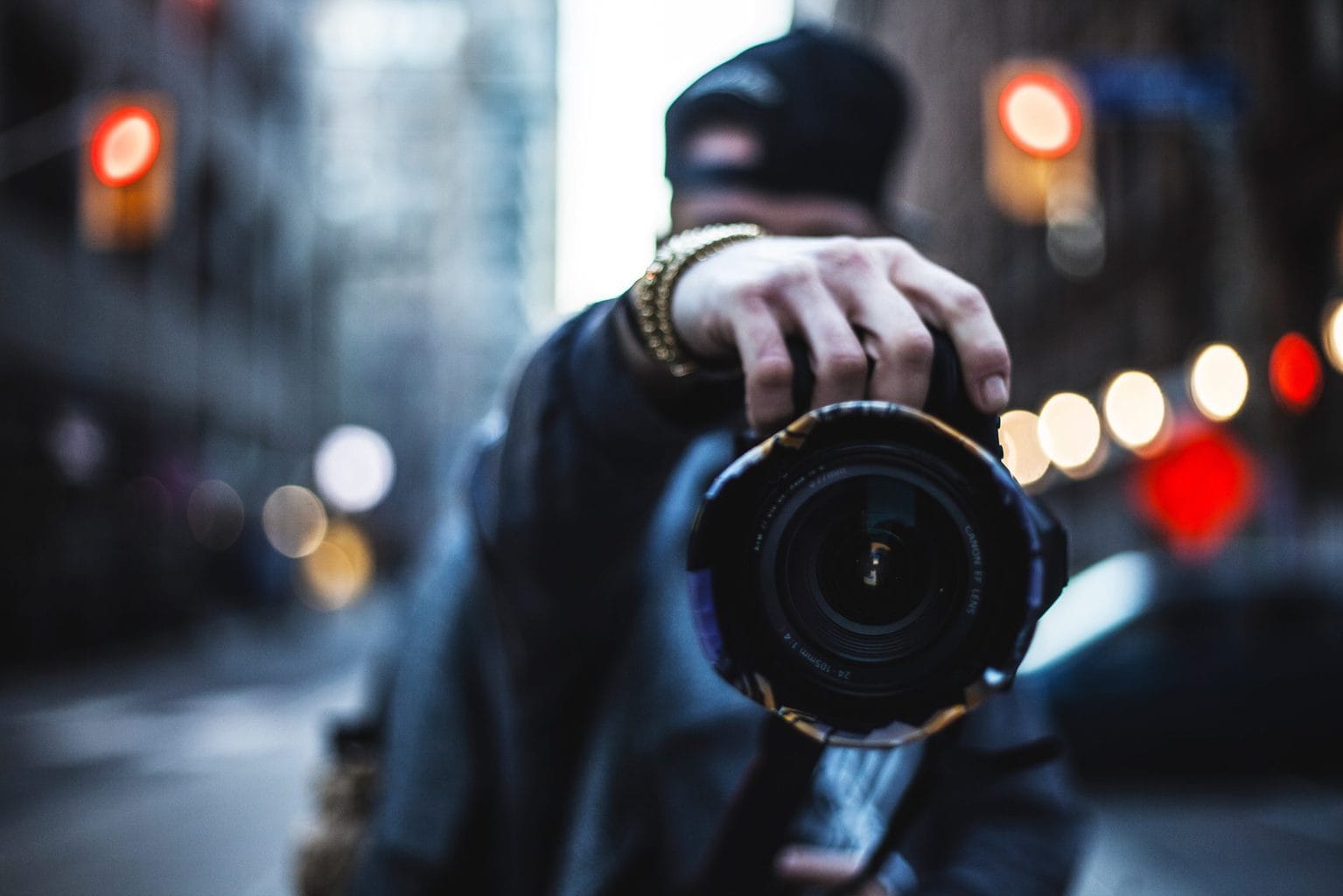Does street photography attract you ? Is street photography one of the photographic disciplines that fascinates you the most ? Congratulations dear reader, you are in the right place, because today I bring you a mega guide where I gather all the tips, tricks and secrets to hit the streets with a camera in hand and achieve authentic and IMPRESSIVE street photographs .
Very recently I told you that the best way to learn photography is to practice street photography . You can read the reasons in the link, while I anticipate that it is a genre so complete and so fascinating, that if you control it, you end up mastering practically any discipline.
Therefore, whatever the genre that interests you the most, I strongly recommend that you practice street photography, how? That is what we are going to see today. Take good note of everything that I am going to share with you here and refer to this guide whenever you need it.
WHAT IS STREET PHOTOGRAPHY?
Street photography or street photography is that photography that captures the human essence in relation to the urban environment in a sincere way.
It is a very general definition, and there is great controversy about what is and what is not street photography, but I will leave you with some generally accepted points of what is and what is not street photography :
- It is not a staged or posed photograph.
- It is not necessary for a person to appear, but their footprint does, for it to be evident that a person has passed by and has left some kind of trace.
- It is a photograph that tells a story or conveys an emotion.
"If you can smell the street when you look at a photo, it's street photography."
bruce gilden
At first glance, street photography may seem simple. We all always carry a camera with us when we go down the street, which makes it very accessible. However, taking a real street photo, a good street photo, is not that easy.
Peeeeeero… that's why we're here! To learn, right? And to make it easier. If you follow the advice that I am going to give you throughout this guide, and practice (this is very important and I will not tire of repeating it), you will awaken the authentic street photographer that you have inside and you will get photos that will even surprise you. .
Before launching, I want to make a couple of clarifications to avoid possible and typical confusion about what is and what is not street photography.
STREET PHOTOGRAPHY VS. DOCUMENTARY PHOTOGRAPHY
It is possible to confuse street photography with documentary photography , however, although they share many aspects and the first can be understood as part of the second, they have clear differences.
Street photography is spontaneous, while documentary photography requires prior research to send a clear message. The first is intended to excite, the second to vindicate or denounce.
STREET PHOTOGRAPHY VS. URBAN PHOTOGRAPHY
For many years they have been the same, however, in recent times a new photographic style has emerged that requires a distinction and a separation so as not to confuse the true concept of street photography, it is urban photography that responds more to street photography than to street photography .
In urban photography, the important thing is not the story or the emotion, but the technique and aesthetics. In addition, urban photography is based on prepared photographs, while street photography implies that it be a sincere, spontaneous photograph, without any type of intervention. Do not scratch yourself, yes, there will be photographs that can be understood as both street and urban photos, but others in which the difference is very evident.
HOW AND WHERE TO PHOTOGRAPH THE STREET
I have already told you that street photography is done in urban environments. What I have not told you yet is that it does not necessarily have to be on the street. Street photographs can be taken in public spaces such as stations, transport, restaurants, shopping centers, etc.
The fundamental premise, I insist, is that they are spontaneous photographs, where there is no intervention in the scene, that there is nothing prepared or manipulated. And that it is not an isolated detail or portrait that does not have anything related to the street.
It is important to convey the sensations of what is happening, capture the atmosphere and manage to transmit the noises, smells, temperature and everything that has to do with the senses beyond sight.

EQUIPMENT FOR STREET PHOTOGRAPHY
Do you want to know a secret? The street photographer's equipment is the simplest that you can throw at your face. Seriously, a camera (with a lens, of course) is enough for you.
And you can do street photography with any camera. That easy. In this discipline, as I told you, it is more important to convey emotion than to achieve impeccable technique. It does not matter if you photograph with a mobile phone or with a latest model full frame SLR. It is important that you capture the essence of the street, what emotions, that you move the viewer, that they feel the photo in their guts. If you are able to do it with a mobile, nothing prevents you.
Although, as I will tell you later, it is essential to go unnoticed, which is why it is advisable to wear discreet equipment, as well as lightweight, so that you can spend hours walking without your neck and back suffering the consequences.
But of course, we already know each other, surely you want me to tell you more, especially if you are thinking about which camera to buy .
We have this special article for you with the recommended equipment for the street photographer in which we recommend which lenses to use for street photography , we talk about the photographic accessories that make your life easier and that can save you a lot of frustration (if you click in the link you will discover them, but you will also see that they are the most basic) and a series of cameras recommended especially for the street . If you want a general idea, for street photography the most recommended are the EVIL or mirrorless cameras , because they are more compact and silent, among other advantages.
THE SECRETS OF STREET PHOTOGRAPHY
To immerse yourself in this genre and learn the secrets of street photography first hand, you cannot miss our Guest Author article where street photographer David Fidalgo reveals his tricks to become a street ninja .
TIPS FOR PHOTOGRAPHING THE STREET
Finally one of the points you were waiting with the most impatience arrives, am I wrong? Let's get down to business, I have a lot of things to tell you, but let me tell you something very important first. There are two fundamental aspects that you must master to take good street photography: lighting and composition . I insist, fundamental. In the links you will find very complete guides on each one of them, so that you can delve into them and can apply the knowledge learned on the street. Also, some tips I'm talking about below are related to light and composition.
But let's continue with the rest of the tips. As we have already talked about the team, I take it for granted and I only remind you of two words: discreet and light ? .
- Discretion. I know, I'm very heavy with this. But it's really important to be discreet so as not to interfere with the scene and to capture it honestly, just as it is happening. And not only regarding the team. For this it is important that your attitude and your clothing is as discreet as possible. Nothing to go with a fluorescent orange shirt that makes you the center of attention.
- I respect. Avoid taking denigrating images and if someone is upset that you photograph them (it rarely happens) smile and apologize, also delete the photo if they ask you to.
- Carry your camera in your hand and not hanging on your neck, or you will miss more than one snapshot. You will also go more unnoticed with it in your hand than hanging.
- Pay attention to the light. Depending on the light, a story or a scene can change completely. The sensations caused by a hard light have nothing to do with diffuse light. Go out at different times of the day, from dawn to the darkest night. Observe the light changes and how it affects the scenes. Take the notes that are necessary, maybe one day you want to return to a specific place looking for a specific light.
- Make a good composition. I have also told you how important it is to take care of the composition to achieve an interesting photograph that attracts and catches the eye beyond a nanosecond.

- Look for scenarios that say something . We are talking about street photography, so the stage is a co-star. A good place will help you contextualize and build the story.
- History and emotion. A street photograph without one or both of these ingredients is not a street photograph. We have prepared tips for adding emotion to an image and another article so that you know how to do narrative photography .
- Look for interesting subjects, but remember to photograph them in context and not as an isolated portrait, but just a portrait.
- Capture gestures and expressions that speak for themselves. A look can be the absolute protagonist of your image. Pay attention to what is happening around you.
- Do not copy. It is easy to be tempted to reproduce those images that shock us, but it is a mistake, and plagiarism is neither ethical nor legal. Try to capture the scenes with your unique and personal look. That does not mean that you do not photograph reflections, silhouettes, juxtapositions, contrasts, backlighting, details, light and shadow play, humorous scenes, lines, geometries, etc. These are themes and resources that work very well despite being the typical clichés, but that and you can make them yours if you capture them from your gaze and not from someone else's.
- Make the viewer wow. If you get that, your image certainly works. Creating ambiguity, surprise or making the audience wonder how the hell you took that photo is the icing on the cake.
- Try going out every day with a different lens or shooting with a single focal length . Over time you will discover which focal length you feel most comfortable with.
- Go out with an idea in your head. It's not something you should always do, but going out with an idea in mind will help you stay alert on that issue and focus your efforts. For example, you can search for scenes that convey a specific emotion (loneliness, nostalgia, insecurity, enthusiasm) or a type of subject, such as men with hats. That said, they are just examples or ideas. Think of something that motivates you to focus there on your next outing.
- In the evening. At night the circumstances and the stories change, the city seems different and although it seems that it is no longer the time due to the lack of light, it is not so. Take advantage of the light from streetlights, shop windows, car lights, advertising canopies and any other point of light that helps you illuminate the scene to capture the essence of the night. I assure you that you can achieve high-impact snapshots.
- Give it a title. Try to give your photograph a title, if you are not able, rethink if your image really counts for something or has enough impact.
- Be agile. You have to be very fast, the scene is gone in a jiffy. It is important to know your camera well so as not to mess around with buttons at the most inopportune moment and to have the settings ready. I'll tell you about the recommended settings right away.
- The best zoom is your feet. It is not about being discreet hiding behind a telephoto lens as if you were a paparazzi , but about not attracting attention. This does not prevent you from approaching the scene and getting inside. It is the best way to make the viewer feel that they are part of the story. Come closer. Without fear.
- Proper clothing. Be careful, discretion is not the only important thing in terms of clothing. Comfort is also essential. Can you imagine having to go home because you haven't dressed enough? Or leave empty-handed because you're frying your neck? Before heading out to explore the city in search of the best street scenes, make sure you wear the appropriate clothing, several layers if you are going to be there for many hours because the temperature can vary several degrees (more or less depending on the part of the world you are in). you are, of course), hat or cap and comfortable shoes. Do not neglect this small detail, it can make the difference between going home with something interesting or frustration as the only catch.
- Observe the environment. Observation is essential in street photography . Observing everything that happens around you will be the only way to capture the stories that happen, the decisive moments and to anticipate the most incredible moments. And not only when you go with the camera, you can also practice observation when you go without it, when you are walking, on the subway or having a coffee on a terrace. Look more around you and less at the mobile screen ? .
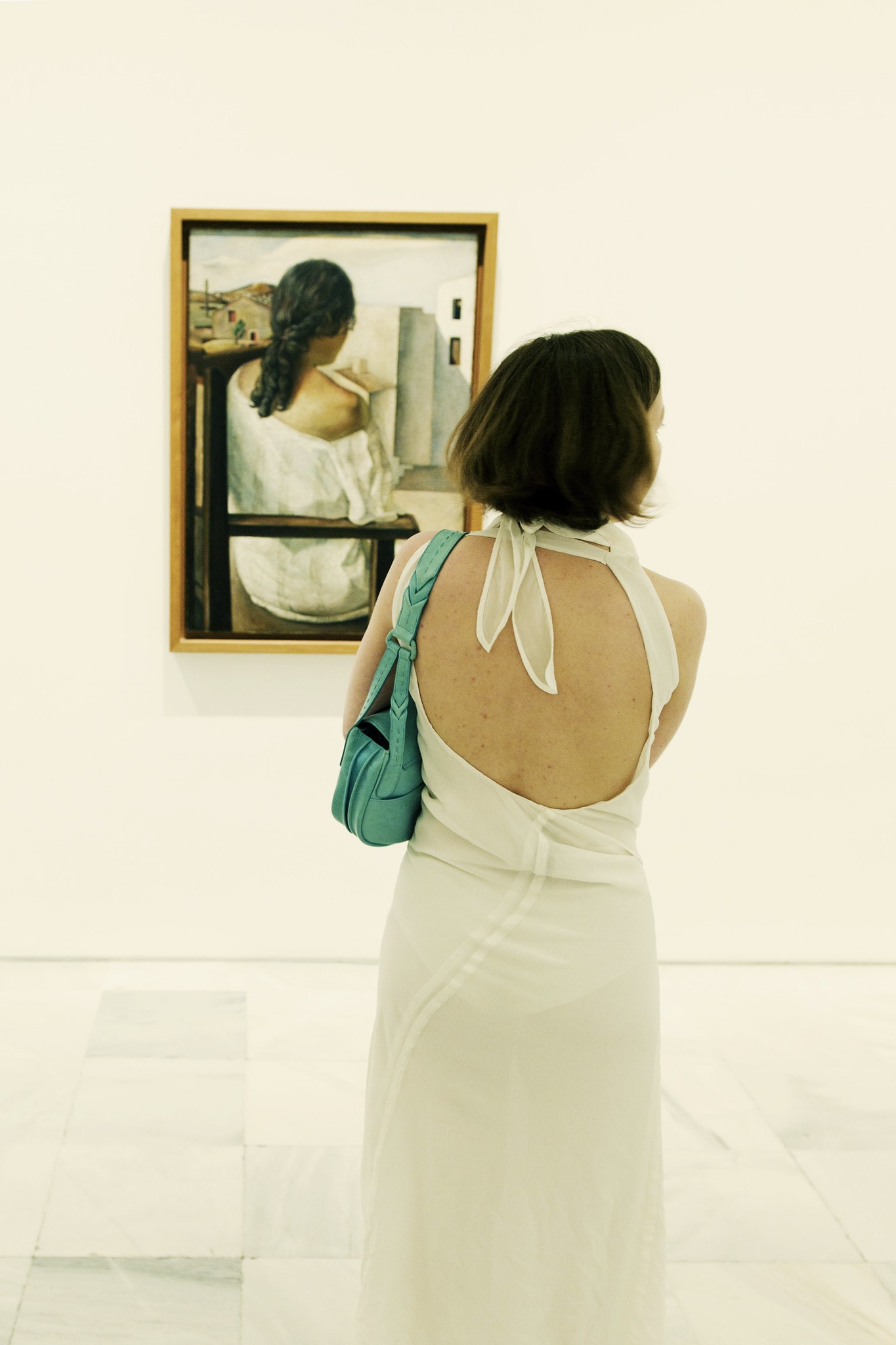
- Avoid unforgivable mistakes. There are errors and errors, those that are not forgiven in street photography are: manipulating a scene, excessive retouching or going overboard with the editing settings, photographing homeless people for no reason or putting watermarks, for example. Flee from them as one who flees from the devil.
- Better to go without company. It is easier to move and your companions will not despair. If this is not possible, take advantage of the situation, talk quietly without losing sight of what is happening around you, this will help you make yourself a little more invisible.
- Practice, practice and practice , there will be days when you return home with nothing really interesting, but you will accumulate experience in observation and you will gain speed to frame and readjust parameters when necessary. Without realizing it, you will automate all these actions and the day will come when you will be able to achieve impressive images without blinking an eye.
- Do not dream or expect to travel to big cities. Your best street photography can be in your own neighborhood, it is the most accessible you have, the one you know the most, the one that allows you to study the light in a corner, return whenever necessary and with which you can be most connected to convey its essence. Start with him. If you get bored you can explore other neighborhoods, but get out of your head that only New York offers great possibilities for street photography .
- From home. And if you can't leave the house, you should know that you can also do street photography from your window or from your balcony. There are many street photographers who have demonstrated this in recent months.
- Patience. Arm yourself with it, I have already warned you that it is not easy to achieve a good street photograph, you cannot control the light, nor modify the scene, nor repeat to correct an error. You have what you have and what lasts lasts, a sigh. It is a mixture of luck, training, observation and perseverance. It is not to arrive and succeed. But if you're really passionate about it, you won't mind trying it as many times as necessary.
- Have fun. Street photography is to live it, feel it, love it... Do not take it as an obligation, to obtain great results you have to turn it into a passion. Enjoy the settings, the characters, play with them and capture them with your camera and with your photographer's heart.
- The camera always with you. The most important thing is not to plan, although it often helps, nor to follow all the instructions to the letter, the important thing is to go out, practice, shoot, lose your fear of photographing the soul of your city or the city where you are visiting . Do not forget your camera even when you go to run an errand, your opportunity may be just around the corner.
- Creativity. When you think you're running out of ideas, turn to series or projects. The latter are more complex, but if you feel like it's time, here's how to tackle a personal photography project.
- Edition. Don't be afraid of editing your photography. It is a necessary step, the last one to close the process since you saw the scene in your head. The edition will help you to highlight what is really important in the image, to bring out the details and modulate the emotional tone of the photograph. It is not about putting here or removing from there, no, it is not manipulating because it would not be street photography, but adjusting shadows and lights, focus, color, highlighting textures where you consider or reframing if necessary.
- Know how to choose Editing a photograph is not only revealing it, it is knowing which of the images within a series of similar frames is the most powerful, the one that can arouse the most interest and gives off the most force. Learning to discard what does not work and choose the best is another essential step that the author of street photography must take.
What do you want more street photography tips ? In the link you will find up to 100 express tips.
STREET PHOTOGRAPHY TECHNIQUES AND TRICKS
Beyond these tips, there are some tricks and techniques that will help you make yourself invisible and capture impressive images without being discovered. Do you want to meet them? Keep reading.
- Shoot from the waist. It takes practice, but you may be lucky enough to get an amazing shot from a lower angle.
- Photography from the screen. Looking at your camera screen is more discreet than looking through the viewfinder. If your camera has Live View mode, take the opportunity to frame and shoot without attracting attention. Also, if the screen is foldable, it will allow you to photograph from other, more interesting angles.
- Shoot with your camera from your mobile. If you have the option, connect your camera to your smartphone with the corresponding application and manage it from your mobile. So no one will know that your camera is taking photos.
- Use the technique to your advantage. Although street photography is more emotion than technique, you can use it to your advantage. A sweep to convey movement or vertigo; fast speeds to freeze it; low or high key, for more dramatic images ; hyperfocal, to get more focused planes ; play with the external flash, if you master it, to achieve aggressive or harsh images, and even with impactful effects, etc.
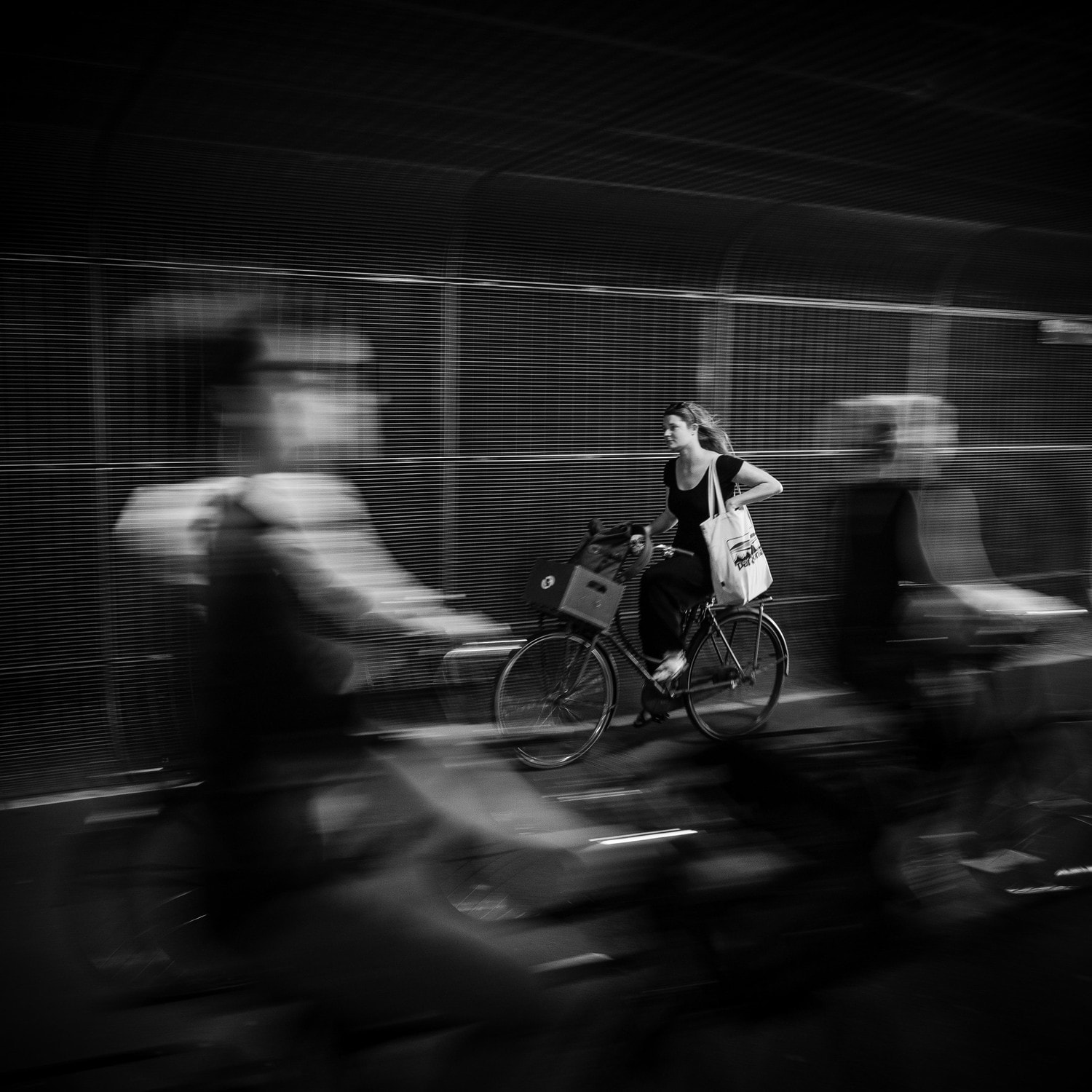
- Don't ask permission. If you need express consent, ask for it later, never before taking the photograph or the spontaneity will have vanished. With the image on your memory card, ask permission to use it wherever you intend.
- Burst fire. To photograph sequences use the burst. In this way you can choose the image with the greatest impact, the best step, the most interesting posture or the most incisive look.
- Hunter technique vs. fisherman. These two techniques are very popular among street photographers. In the first one, you go hunting for the photo, you wander without stopping observing your surroundings and when you find exactly what you want, you shoot . In the second, that of the fisherman, you find an interesting place and wait patiently until the right subject passes by that gives meaning to the photograph.
STREET PHOTOGRAPHY IN COLOR OR BLACK AND WHITE?
As much as I am a lover of black and white photography, if you follow me you will already know, both languages are equally valid in street photography . While black and white is timeless and focuses you on the story, color can play tremendously on a compositional or emotional level.
Each of these languages have their particularities, their followers and their detractors. In the end, everyone has to find the way to express themselves with the one they feel best about. You decide if you prefer color or black and white (or both) to tell your stories.
Be careful, not everything goes.
Color has its nuances, the brain has its way of interpreting it, it's not just that I see a scene and photograph it in color and that's it. No, color has to contribute something, because of the contrast, because of the atmosphere it creates, because of repetition, or for whatever reason, but there has to be a reason. Discover how to master color in your compositions in this article and you will never leave it to chance again.
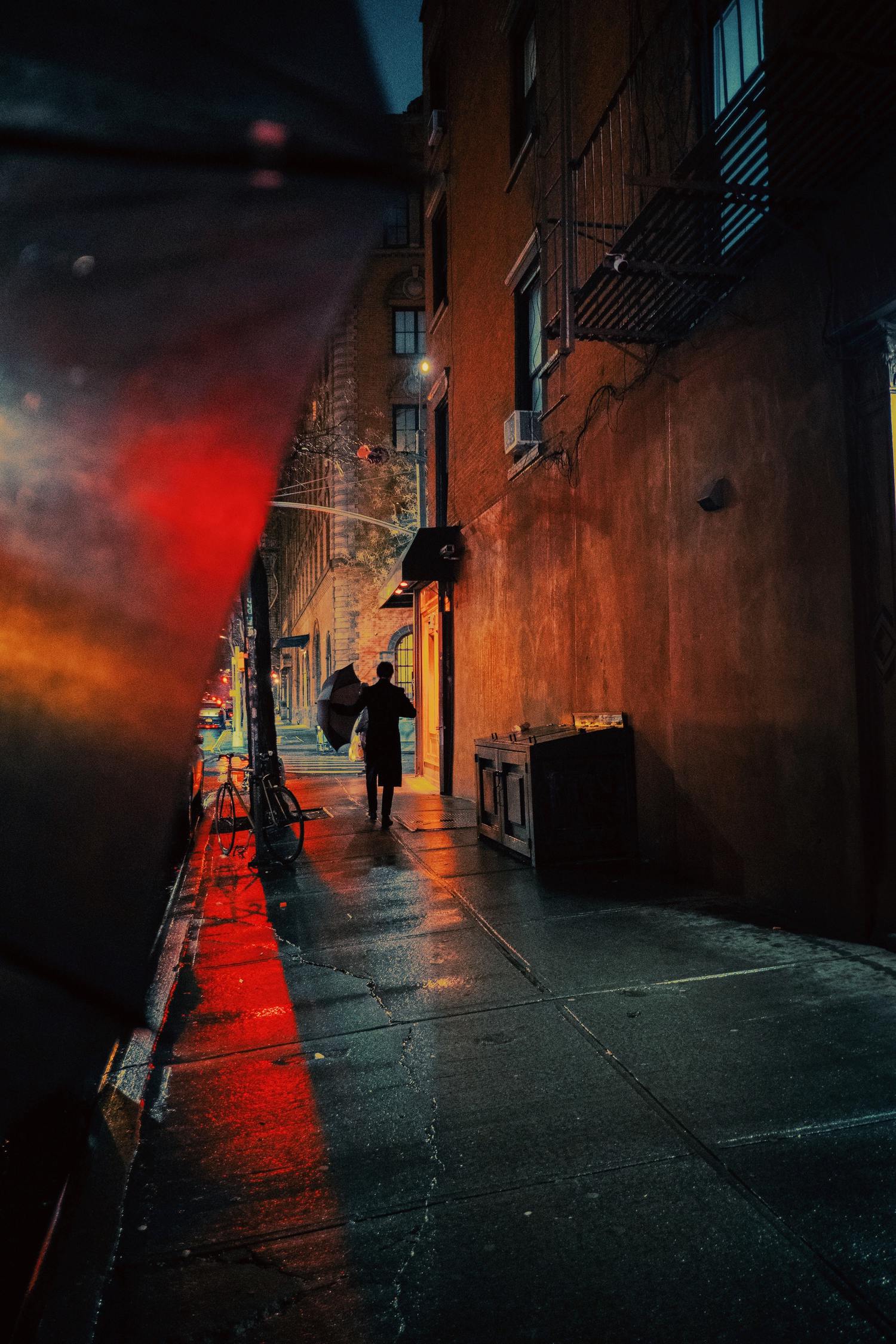
Regarding monochrome, not all photographs work in grayscale. Sometimes an image is sustained by color, even if we are not aware of it due to lack of practice, but when stripped of it, it loses strength. For this reason, it is important that when composing a black and white photograph, you are clear from the beginning that it will be in grayscale and you make decisions accordingly. In this mega guide you will find all the tips and tricks to get spectacular black and white photos.
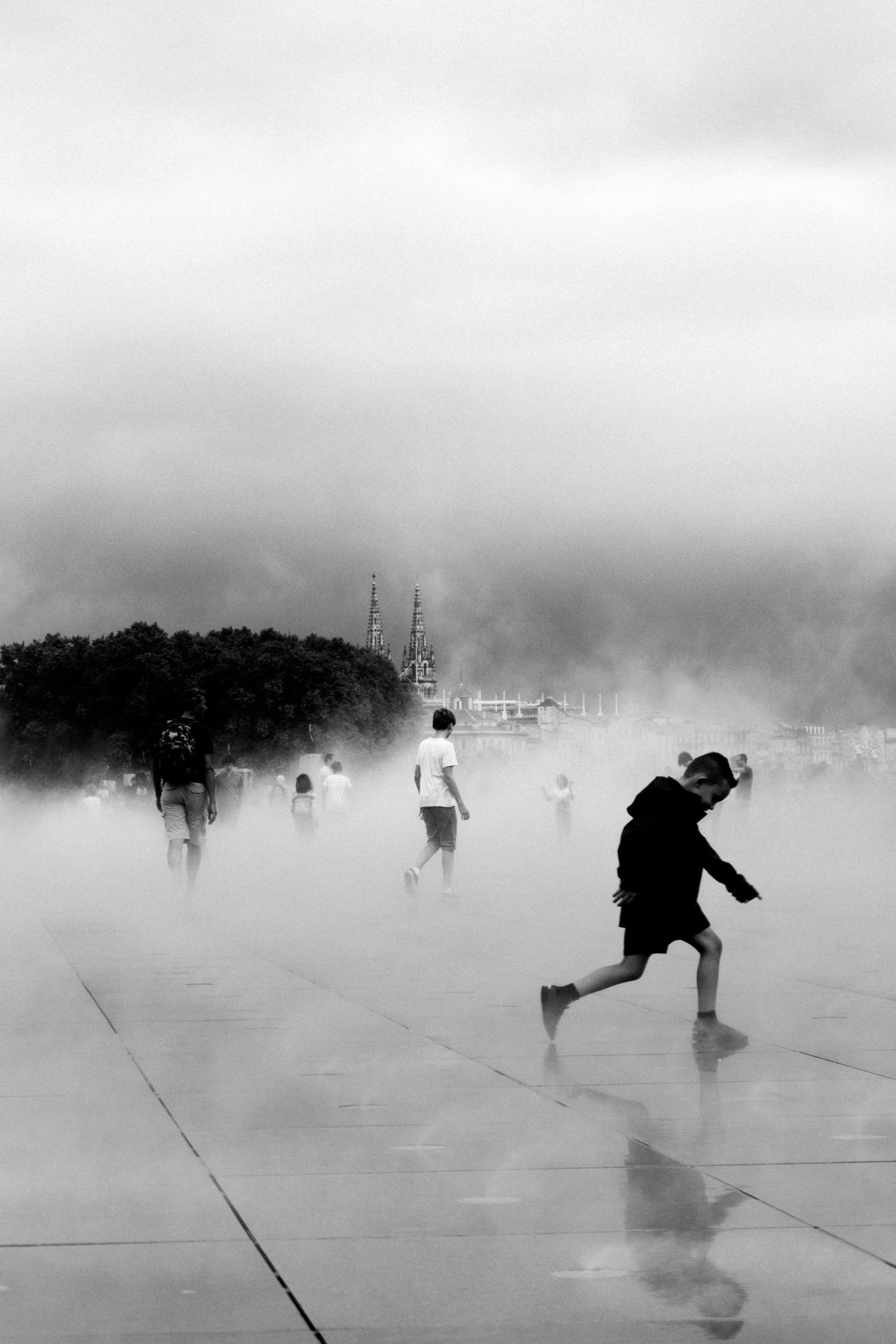
STREET PHOTOGRAPHY PARAMETERS
I know you're waiting for recipes. You ask for them very often and what else would I want to be so easy. Unfortunately, it doesn't work that way, because this is not an exact science but an art in which an infinite number of situations occur. Peeeeeeeero, that does not mean that we cannot start from some recommended parameters or settings and, from there, according to the situation, readjust what is necessary.
Let 's see how to configure your camera for street photography:
- Semi-automatic modes. Far from the automatic mode that I do not recommend in this case (and almost none), there are the semi-manual modes of Aperture Priority or Speed Priority. These modes are more suitable because they allow greater agility than Manual Mode. The first thing you should ask yourself is what you need or what you want to achieve. Do you care that nothing escapes focus? Use Aperture Priority with f/5.6 of/8, for example. On the contrary, if you need a minimum speed for your subject to come out sharp, shoot with Speed Priority and the camera will calculate the rest of the parameters to achieve a correct exposure.
- ISO. It is preferable to have an interesting photo with noise than to lose a photo, do not be afraid to raise the ISO to get your image, always up to the limits that your eyes tolerate of course. On some cameras you have the option of setting a maximum auto ISO. Take a look at your camera manual and set it to the bearable limit for you.
- RAW format. Starting from the idea that you are going to edit your image and get the best out of it in the processing, I definitely recommend using the RAW format that will save all the information of the scene. Now, if you don't think of editing your image for anything in the world, it would be better if they were in JPG and they will take up less space (the burst will also be faster).
- Focus modes. If you are shooting still subjects, the most suitable focus mode is the single mode (AF-S or One Shot ). Conversely, to capture a moving subject, continuous focus mode (AF-C or Al Servo ) will work best for you. Oh yes, of course, those situations in which you are not sure what is going to happen or if your subject is going to move at any moment... in that case, if your camera has it, set the AF-A or Al Focus mode. Do you have any doubts or questions that are on your mind? The answers in this mega guide on the approach in photography .
- Exposure Metering Modes . For scenes with homogeneous light, the easiest and most effective is an evaluative metering. However, when you encounter contrasts of light and shadow, looking to capture a silhouette, backlighting, etc., I recommend spot metering.
- Turn on the image stabilizer. Unless you're using a tripod for long exposures, turn on the stabilizer and you'll be able to use slightly slower speeds.
- Activate silent mode. Some cameras have silent mode. If this is your case, activate it. Remember the mantra: go unnoticed.
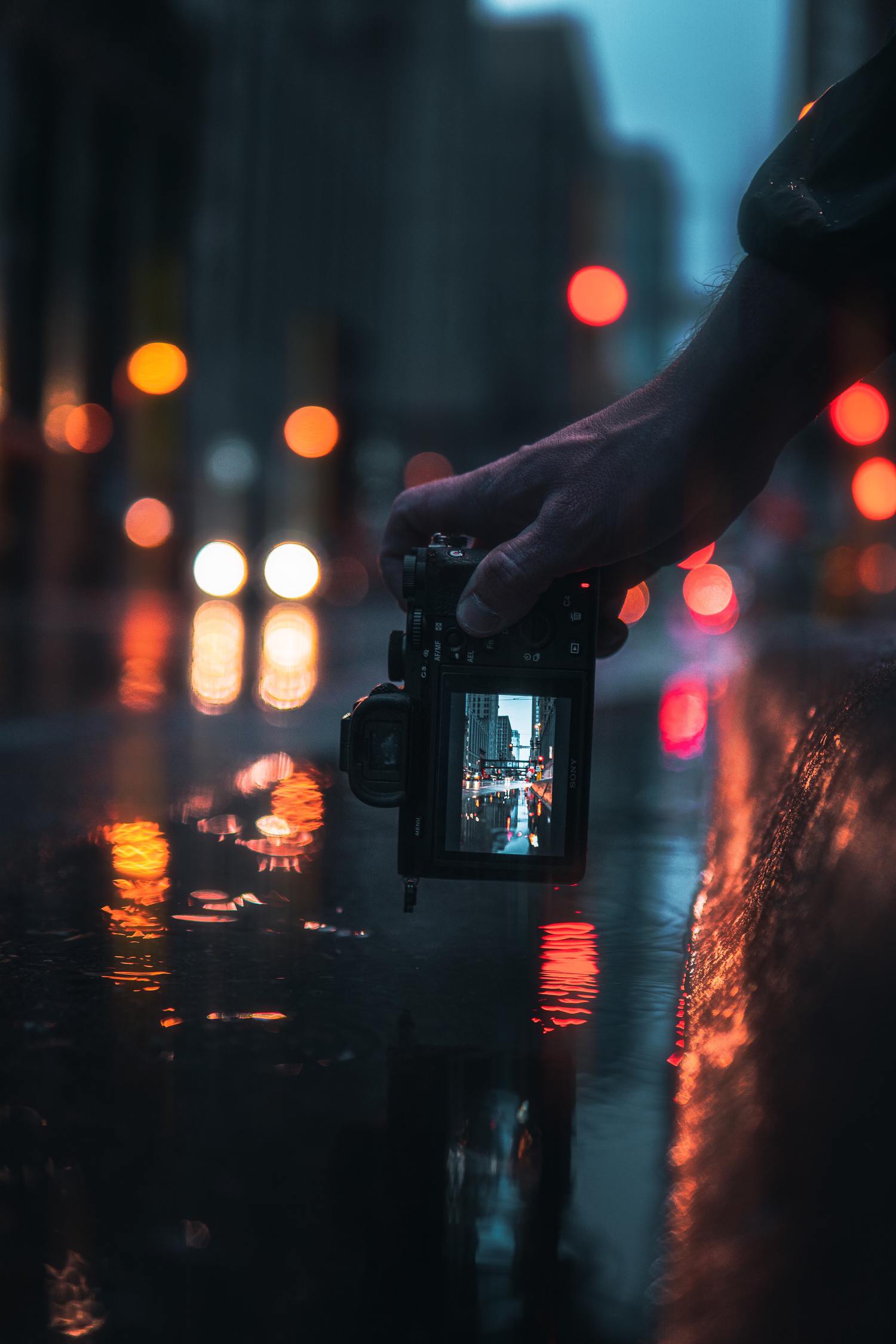
Regardless of what you decide according to the circumstances, the important thing is that you always have your camera ready. That is to say, if the circumstances change because you change the scenery, the light varies, the reason you are looking for, etc., readjust the parameters and do some other test to make sure that when the time comes, you are not going to miss it for a bad fit.
STREET PHOTOGRAPHY WITH MOBILE
I said it at the beginning of the article, of course you can do street photography with your mobile. What you can't do is street photography without feeling it. But back on topic, if you want to get the most out of your smartphone for street photography, don't miss these tips.
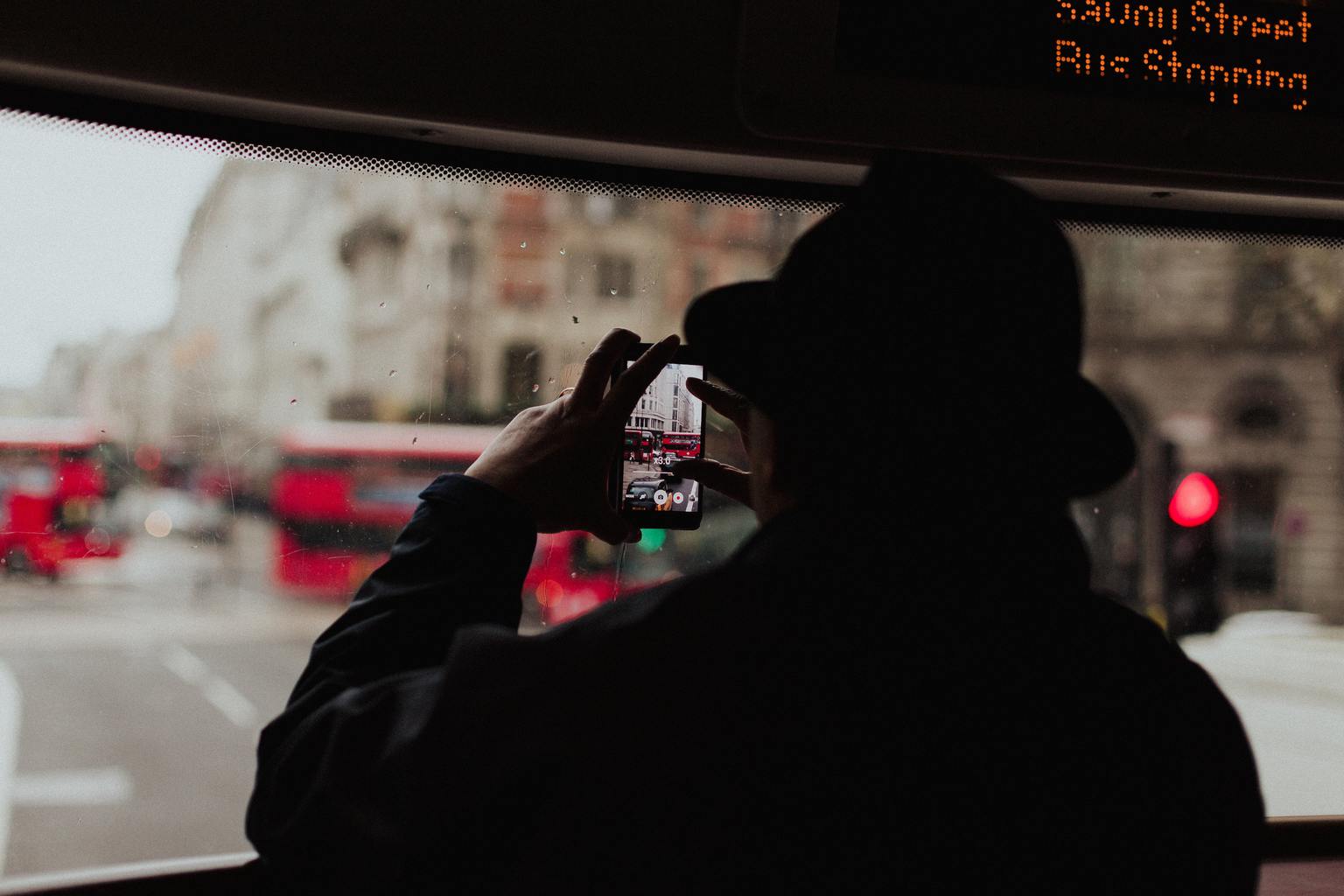
If yours is the mobile for all types of photography, I am very sure that you will love this mega guide of tips for mobile photography.
What are you wondering which are the mobile phones with the best cameras ? In the link I leave you my favorites.
LEGAL ASPECTS
Photographing on the street has its legal risks. These depend on each country, so it never hurts to find out, especially when you are traveling and it is not your place of residence.
Nor is it the same as taking the photo for simple personal satisfaction or with the intention of exposing it, selling it or profiting in any other way. In this case you will need a written consent.
And here and in Beijing , if someone asks you to delete a photo you've taken of them, it's their right to delete it. Of course, as I have already told you before, it is not something that will happen to you often if you do not hide as if you were committing a crime, because then you will raise suspicions and more than one person may ask you for explanations. Moral: do not hide, that photographing is not doing anything wrong.
If what you want to know is what rights you have over the photos you take and share , this article comes from the movies.
FRUSTRATIONS AND FEARS
Oh my friend, who hasn't gone through the typical frustrations and fears before taking to the streets to take photos. Fear is natural, and it is not bad. The important thing is to face it.
The worst that can happen to you is that they ask you to delete a photo, which I repeat, is not frequent. But if it happens to you, you just have to explain why you take photos, why you want them, show the image and delete it if they insist that you do so. And all this without-losing-the-smile.
Regarding frustrations, they are part of the path of photographic learning, regardless of the discipline, do not throw in the towel because they will come too. In the link you will find how to cope with them.
STREET PHOTOGRAPHY ON INSTAGRAM
Instagram, with its lights and shadows, is a great source of inspiration when it comes to street photography. On this social network you can discover the work of incredible photographers, train your eye and learn to distinguish what works and what doesn't, in addition to sharing your images so that they can be seen anywhere on the planet with just one click. (By the way, are you following us already? This is our IG account).
I want to leave you some resources to delve into street photography through Instagram:
- Street photography accounts. There are some accounts of collectives or groups that do a great job of disseminating street photography , such as La Calle Es Nuestra, the most recent Urban Observersand other more international ones like Street Photo Internationaland About Street Photography. In any of them you will find inspiration until you are fed up.
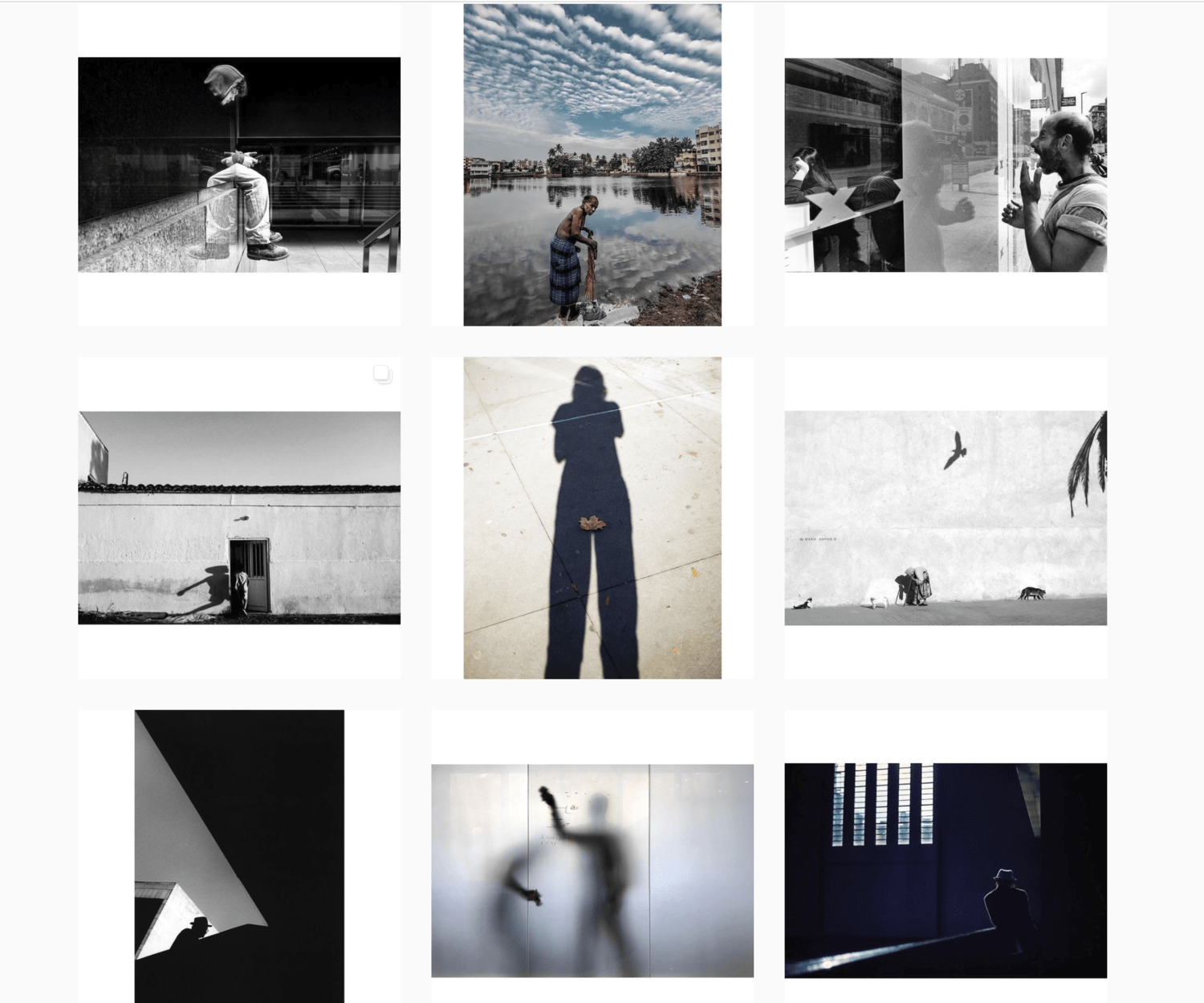
- Hashtag. I leave you with some in case you need more inspiration (although there are no filters in hashtags and you can find anything), or if you want to share your street photos. There's more, obviously, these are just a few examples to get you started:
- Street photographs that tell stories: #streets_storytelling
- Black and white street photography: #streetphoto_bw
- Color street photography: #streetcolour
- Eyeshot Street Photography. It is a leading print street photography magazine , but you can follow their account on Instagram.
This, as I was saying, is just an appetizer, from here what you want to investigate and the time you want or can dedicate to it.
STREET PHOTOGRAPHERS TO INSPIRE YOU
Since we are talking about inspiration, there is nothing better than going to the masters, to the great ones who endure over time and despite fashions. In this article you will find the 15 street photographers that you should know no matter what .
BOOKS ON STREET PHOTOGRAPHY
I would like to end with some literary recommendations on street photography, in case you feel like going deeper into the subject:
- Master the art of street photography , our ebook on street photography is the result of months of work by the entire team. I had wanted to post about this topic for a long time and a few months ago it finally saw the light of day. Suitable for starting from scratch.
- Urban Photography (Jesús León) , and no, it is not the urban photography that I mentioned at the beginning, it is a street photography book that is worth reading.
- Street photography (Jota Barros), another much more recent title in Spanish is that of Jota Barros, a member of La Calle Es Nuestra, which has been very well received by readers.
- Master of Street Photography.Street photography by the hand of 16 authors who tell you about their experience through advice, interviews and image analysis. In English.
To immerse yourself in street photography images instead of reading tips or technique, here I leave you with a brief, but fabulous, list of photobooks, where the photographs are the protagonists with a universal language.
- Snapshots (Elliott Erwitt)
- Street Photographer (Vivian Maier)
- The Americans (Robert Franks)
- The Suffering of Light (Alex Webb)
- Modern Color (Fred Herzog)

